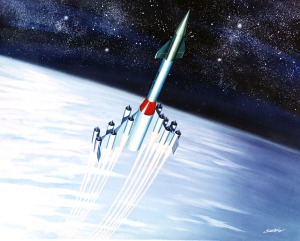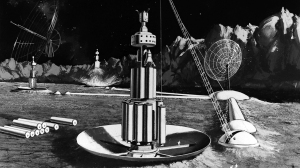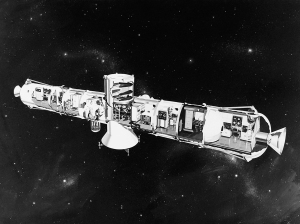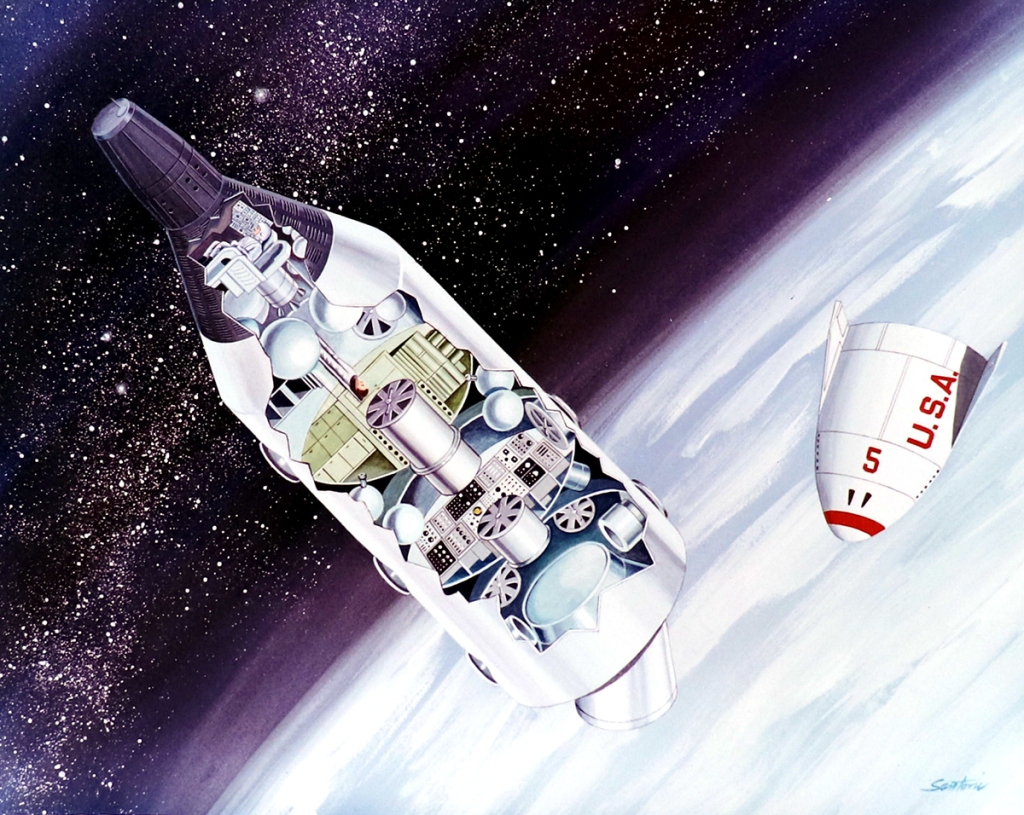

Found an interesting nugget here.
Image credit: Krafft Ehricke Papers / Convair
Image source: NASM

Unmanned probe approaching Pluto. Probe is powered by thermionic radioisotope power generator. The laser beams for surface illumination, with optical sensors slaved to the beams. Other equipment comprises radiation counters as well as field, plasma and particle sensors.
Image credit: Krafft Ehricke Papers
Image source: NASM

Earth-moon based planetary space port in 1988. Spacecraft are nuclear propelled interplanetary vehicles, launched by solid propellant lift-off rockets side-mounted around center section which, like the cylinders at the spacecraft’s center section, contain nuclear pulse units. In background a large antenna, belonging to the lunar deep space network is visible.
Image credit: Krafft Ehricke Papers
Image source: NASM

Vehicle Requirements

Image credit: Krafft Ehricke Papers
Image source: NASM

Solar Transportation was a presentation given by Krafft Ehrikke at the American Astronautical Society in 1966. In essence, the lecture describes how our solar system might be navigated in the year 2000. As reprinted in the book by Marsha Freeman, it’s a surprisingly enjoyable read.
The summary includes a wish list of propulsion systems to be developed.
Late 70s and most of the 80s
Late 80s and 90s
Ehrikke then presents a timetable, representing a “sensible and likely” evolution of manned helionautical missions.
1970s
1980s
I990s
Solar Transportation then goes back the future and the fall of the year 2000, looking back at the events that led to the interplanetary travel we enjoy at the dawn of the new millennium. The interplanetary corridors between Mercury and Saturn are alive with manned vehicles. Unmanned probes have reached the Sun. Food is grown on Mars and it is expected that exports to Earth will begin within fifty years. An orbital supply and rescue station is established at Venus, acting as a helionautical coast guard station. But like I said already, go and read it yourself.
Image credit: Krafft Ehricke Papers
Image source: NASM

Above: A beautiful rendering of a Gemini B / MOL by Numbers Station favorite John Sentovic found in the Krafft Ehricke Papers. Below: Gorgeous artwork of same by Lockheed artist Ludwik Źiemba. At first glance you’d be forgiven for thinking they were the same image, I certainly did. My guess is that both are based on the same cutaway by a McDonnell draughtsman. The industry term for this is, “heavily referenced.”

Image credit: Krafft Ehricke Papers / Lockheed